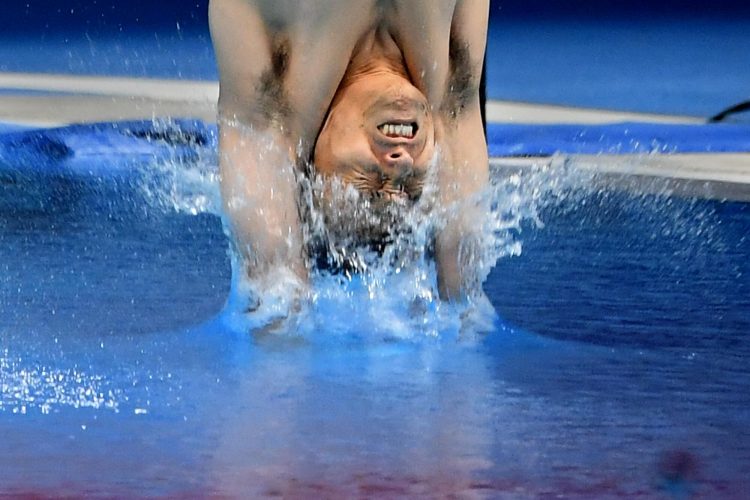: The Unfortunate Reality of Face Split Diving Accidents: A Deep Dive into the Causes and Consequences

In the exhilarating world of extreme sports, where adrenaline junkies constantly seek new challenges, face split diving has emerged as a perilous activity that demands both skill and caution. Unfortunately, this high-risk sport has also seen its fair share of accidents, with face split diving incidents leaving participants and spectators shocked and grappling with the grim consequences. This article delves into the dangerous realm of face split diving accidents, exploring the causes, repercussions, and the urgent need for increased safety measures.
Understanding Face Split Diving:
Face split diving is an extreme form of diving that involves cutting through the water surface face-first from a significant height. Unlike traditional diving, face split diving requires participants to execute precise movements to create a dramatic and visually stunning effect as they slice through the water. The goal is to make a clean entry with minimal splash, showcasing both skill and courage.
Causes of Face Split Diving Accidents:
- Inadequate Training: Many face split diving accidents can be attributed to inadequate training. Participants may underestimate the complexity and risks associated with the sport, attempting daring dives without mastering the essential techniques. Proper training is crucial to understanding body positioning, entry angles, and water penetration to minimize the chances of accidents.
- Overestimation of Abilities: Some face split diving accidents occur when individuals overestimate their abilities. In the pursuit of pushing personal limits, participants may attempt dives beyond their skill level, leading to loss of control during descent and catastrophic outcomes upon impact with the water.
- Environmental Factors: Environmental conditions play a significant role in face split diving accidents. Strong winds, turbulent water surfaces, and poor visibility can all contribute to an increased likelihood of accidents. Ignoring or underestimating these factors can lead to disastrous consequences for even the most experienced face split divers.
Consequences of Face Split Diving Accidents:
- Severe Facial Injuries: As the name suggests, face split diving accidents often result in severe facial injuries. The impact of hitting the water at high speeds can cause fractures, lacerations, and contusions to the face, leaving participants with long-lasting physical and psychological scars.
- Spinal Injuries: The force generated during a face split dive can also lead to spinal injuries, ranging from sprains to fractures. The sudden deceleration upon entering the water puts immense strain on the spine, and without proper technique or body control, participants risk serious harm.
- Psychological Trauma: Beyond the physical injuries, face split diving accidents can inflict lasting psychological trauma on the individuals involved. The fear and anxiety stemming from a traumatic incident may not only hinder recovery but also deter participants from ever attempting such extreme activities again.
Safety Measures and Preventive Measures:
- Comprehensive Training Programs: To mitigate the risks associated with face split diving, it is imperative to establish comprehensive training programs. These programs should cover not only the technical aspects of the sport but also emphasize safety protocols and risk assessment. Adequate training can equip participants with the skills needed to navigate the complexities of face split diving safely.
- Strict Adherence to Safety Guidelines: Enforcing and adhering to strict safety guidelines is crucial in preventing accidents. Organizers, coaches, and participants must prioritize safety over spectacle, ensuring that proper protocols are followed at all times. This includes assessing environmental conditions, evaluating the participant’s skill level, and implementing emergency response plans.
- Mandatory Protective Gear: Wearing appropriate protective gear is non-negotiable in face split diving. Helmets, face guards, and specially designed suits can significantly reduce the impact of a dive, minimizing the risk of severe injuries. Making these safety measures mandatory reinforces the importance of participant well-being.
Conclusion:
Face split diving, with its breathtaking visuals and adrenaline-pumping maneuvers, captivates both participants and spectators alike. However, the allure of this extreme sport comes with inherent risks that demand a proactive approach to safety. By prioritizing comprehensive training, strict adherence to safety guidelines, and the use of mandatory protective gear, the face split diving community can work towards minimizing accidents and ensuring the longevity of this high-risk activity. Balancing thrill with responsibility is key to enjoying the beauty of face split diving without succumbing to the tragic consequences that can result from negligence and overconfidence.
-
What is face split diving?
- Face split diving is an extreme form of diving where participants dive face-first into the water from a significant height, aiming for a clean and visually striking entry with minimal splash.
-
How does a face split diving accident occur?
- Face split diving accidents can happen due to various factors, including inadequate training, overestimation of abilities, environmental conditions, and failure to adhere to safety guidelines. These accidents often result in severe facial and spinal injuries.
-
What kind of training is required for face split diving?
- Proper training for face split diving is essential and should cover body positioning, entry angles, water penetration techniques, and emergency procedures. Training programs should be comprehensive and emphasize safety measures.
-
Are there age or health restrictions for participating in face split diving?
- Age and health restrictions may vary depending on the specific guidelines of face split diving organizations. Generally, participants should be in good health, and age restrictions may apply to ensure the physical capability to handle the demands of the sport.
-
What are the common injuries in face split diving accidents?
- Face split diving accidents often result in severe facial injuries, including fractures and lacerations. Spinal injuries, ranging from sprains to fractures, are also common. Psychological trauma may occur due to the intensity of the experience.
-
Can face split diving be made safer?
- Yes, face split diving can be made safer through comprehensive training programs, strict adherence to safety guidelines, and the use of mandatory protective gear. These measures aim to minimize the risks associated with the sport.
-
What safety gear is recommended for face split diving?
- Protective gear such as helmets, face guards, and specially designed suits is recommended to reduce the impact of a dive and minimize the risk of severe injuries. The use of proper safety gear is crucial for participant well-being.
-
How important is it to consider environmental conditions before face split diving?
- Environmental conditions, including wind strength, water turbulence, and visibility, significantly impact the safety of face split diving. It is crucial to assess these conditions before attempting a dive and adjust plans accordingly to ensure a safe experience.
-
Are there emergency response plans in place for face split diving events?
- Yes, organized face split diving events should have well-defined emergency response plans. These plans include procedures for handling injuries, providing medical assistance, and ensuring the overall safety of participants.
-
Can psychological trauma be prevented after a face split diving accident?
- While it may be challenging to prevent psychological trauma entirely, offering psychological support and counseling to individuals involved in face split diving accidents can aid in their recovery and help them cope with the emotional aftermath.
-
Is face split diving suitable for beginners?
- Face split diving is an advanced diving technique, and beginners are strongly advised to undergo thorough training in basic diving skills before attempting face split dives. Gradual progression and mastery of fundamental techniques are crucial for safety.
-
How can organizers ensure the safety of face split diving events?
- Organizers play a pivotal role in ensuring safety by implementing and enforcing strict safety guidelines, conducting thorough participant assessments, monitoring environmental conditions, and having trained medical personnel on standby during events.
-
Are there any regulatory bodies overseeing face split diving safety?
- The oversight of face split diving safety may vary by region, but some organizations and regulatory bodies may establish guidelines and standards for the sport. Participants and organizers should be aware of and adhere to any applicable regulations.
-
What should someone do if they witness a face split diving accident?
- If someone witnesses a face split diving accident, it is crucial to alert event organizers or emergency services immediately. Avoiding unnecessary movement of the injured individual and providing first aid, if trained to do so, can be crucial in the initial moments before professional help arrives.
-
Can face split diving accidents be completely eliminated?
- While it may not be possible to entirely eliminate the risk of accidents in extreme sports like face split diving, implementing and following strict safety measures can significantly reduce the likelihood of incidents and enhance the overall safety of the activity.





